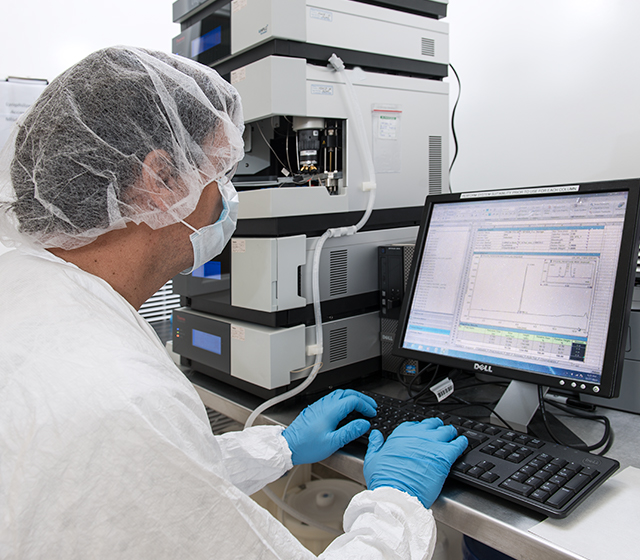Neuroscience peptides
A large collection of Neuroscience related peptides
For over 25 years, we are a leading provider of Neuroscience related off-the-shelf peptides used as research tools to understand pathological mechanisms behind Alzheimer’s disease and Multiple Sclerosis. As a pioneer in the field, we have amassed a collection of standard and variant peptides, and our proprietary production methods enable large single lot quantities.
Alzheimer's Disease (AD)
Alzheimer’s disease, the most common cause of dementia, is a progressive neurodegenerative disease affecting more than 40 million people worldwide.
Hallmarks are the presence of senile plaques and neurofibrillary tangles, surrounded by damaged neurons. β-Amyloid 1-42 is a major component of the plaques, and many studies suggest that it may form toxic oligomers and fibrils under physiological conditions.
Hyperphosphorylated Tau is heavily present in the tangles, but these characteristics being causes or consequences of the disease are still under debate. Whenever the science progresses, our portfolio does follow.
Multiple Sclerosis (MS)
MS is an autoimmune disease affecting the brain and spinal cord, whereby the immune system attacks the myelin oligodendrocyte glycoprotein (MOG), and myelin basic protein (MBP), of the myelin sheath that insulates nerve fibers. This leads to nerve demyelination and subsequent nerve damage. It is the most common demyelinating disease with a varied global prevalence. We offer myelin related proteins and peptides for use as antigens to induce Experimental Autoimmune Encephalomyelitis (EAE), an animal model of the central nervous system (CNS) demyelinating diseases, including MS.
Creutzfeldt-Jacob disease (CJD)
CJD is a neurodegenerative disease caused by an abnormal isoform of a cellular glycoprotein known as the prion protein. The normal cellular form (PrPc) gets transformed into an infectious or scrapie form (PrPsc) via poorly understood mechanisms resulting in a switch between alpha-helical to beta-sheet configuration. CJD occurs worldwide with an estimated annual incidence being one in a million. Several forms of CJD exist, including ‘mad cow’ disease, variant CJD etc. Peptide fragments of the prion protein are being studied from a therapeutic standpoint to target disease mechanisms including the design of antibodies directed towards specific epitopes.
Neuropeptides
Neuropeptides are small proteinaceous substances composed of a diverse class of signaling molecules in the brain and involved in many physiological functions. They are produced and released by neurons through a regulated secretory pathway and act on several substrates. A significant number of neuropeptides and their receptors, including agonists/antagonists acting at the level of neuromodulation and transmission are being explored for many opportunities in the drug discovery of new targets for the treatment of several disorders affecting the nervous system.
Opioids
Opioids are substances acting on specific receptors found in the central and peripheral nervous systems and in the gastrointestinal tract to primarily produce pain relief. The endogenous opioid peptides comprise β-endorphins, enkephalins, dynorphins and their receptor families. They have been shown to exert a variety of pharmacological effects and are thought to play roles in the regulation and physiological control of various functions including analgesic effects, food intake and regulation, modulation of stress responses etc. They may also participate in the pathophysiology of diseases including Parkinson’s disease and seizures.
